The following post is from Jonathan Gray, Community Coordinator at the Open Knowledge Foundation.
Today was the Eurostat Hackday, where coders and designers in several European cities gathered to dig into the Eurostat data, the biggest source of statistical information about Europe and European member states. We met at the Centre for Creative Collaboration in London, who very kindly agreed to host us for the day.
Getting started

We started the day with a quick round of ‘hellos’ (both physically and virtually) and an encouraging message from Neelie Kroes, Vice President of the European Commission. Then we started getting stuck into the datasets, focusing particularly on energy data.
First of all we had a go at using the open source Protovis toolkit to represent the data. We did a quick hack to look at comparative energy consumption per capita across Europe:
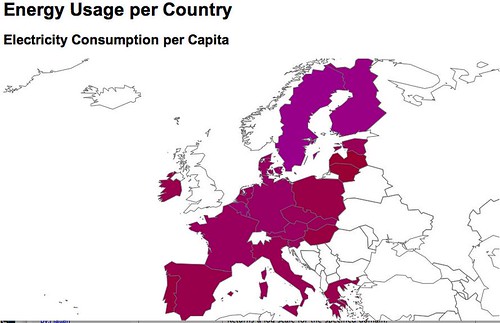
Energy data and the 2020 energy efficiency targets
We then started looking into data related to the European Commission’s ‘Energy Efficiency Action Plan’ (launched by José Manuel Barroso in early 2008), which I had been researching a little earlier in the week and thought would be interesting to use as a focal point for the London event.
The plan basically aims to ensure:
- A reduction in EU greenhouse gas emissions of at least 20% below 1990 levels
- 20% of EU energy consumption to come from renewable resources
- A 20% reduction in primary energy use compared with projected levels, to be achieved by improving energy efficiency.
We decided that rather than focusing on emissions data (which is already subject to a high degree of public debate) we would focus on data related to energy consumption, efficiency and the ‘energy mix’.
We used the open source HIDE tool, developed by the giCentre at London’s City University, to explore the data with the assistance of Aidan Slingsby, who is a research fellow at the centre, and Lisa Evans from the Guardian Datablog (and from our Where Does My Money Go? project).
How is energy consumed across Europe?
First off, we took a top down look at the overall consumption of energy across different European countries from 1990-2008:
Then we looked at how this was broken down into different sectors over this period:
We had a go at looking at which countries were the biggest consumers of energy within these different sectors (all colours are the same as top-level sectoral breakdown above):
Then, returning to the top-level country breakdown, we had a look at how energy is consumed within each country in different sectors:
Drilling down even further, we looked at how consumption within these sectors changed over time for each country:
Finally we made all the countries the same size, to be able to compare consumption trends over time more easily.
How can the 20% reduction in energy consumption be achieved?
We really wanted to build a tool to look at how different policy options and sets of behaviours would contribute to the target of a 20% cut in energy consumption, but we could not find a detailed comparative dataset containing this kind of information, or indeed many estimates about the impact of different energy consumption cutting measures.
If you know about this kind of thing, please get in touch as we’d still very much like to have a go at building a tool like this for different European countries and for Europe as a whole!
How much of Europe’s energy is produced from renewable sources?
Next we decided to look at data related to the target of achieving 20% renewable energy sources in the energy mix across Europe, starting with a top down view of renewable/non-renewable energy production (not consumption!), each broken down by country:
Then we had a look at total energy country broken into country, showing the growth (and decline) of renewable energy as a percentage of total production from 1997-2008.
Finally we made the countries the same size (rather than showing them sized in proportion to percentage of total energy production) and looked at how renewable energy changed as a percentage of the whole energy mix over the same period.
Next steps, follow ups, etc
At the end of the day we were scribbling, sketching and brainstorming about how we might be able to represent the targets for renewable energy production (as a total of total energy consumption) across Europe (from a modest 10% in Malta to an impressive 49% in Sweden).
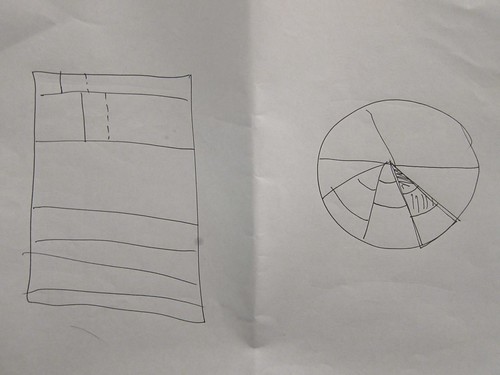
While we found the EU have produced a neat little tool doing this a bit, it would be really interesting to have a more comprehensive and interactive tool to monitor the 2020 energy efficiency targets, and other key targets and indicators across Europe, to help European citizens, decision-makers, NGOs, and the media understand key policies and track the progress of their country towards realising them.
The energy efficiency targets are of particular relevance to current debates in the UK. Renewable energy currently comprises around 2.2% of total consumption in the UK, which means that it will be quite a big jump to its target of 15% in 2020 (not so ambitious in comparison with other European countries). There has been speculation from both inside and outside government that the UK may struggle to hit this target. This area may be of particular interest at the moment given announcements earlier today about measures to incentivise investment in low-carbon technologies.
So there’s plenty of things to think about until the next Eurostat Hackday!
Dr. Jonathan Gray is Lecturer in Critical Infrastructure Studies at the Department of Digital Humanities, King’s College London, where he is currently writing a book on data worlds. He is also Cofounder of the Public Data Lab; and Research Associate at the Digital Methods Initiative (University of Amsterdam) and the médialab (Sciences Po, Paris). More about his work can be found at jonathangray.org and he tweets at @jwyg.
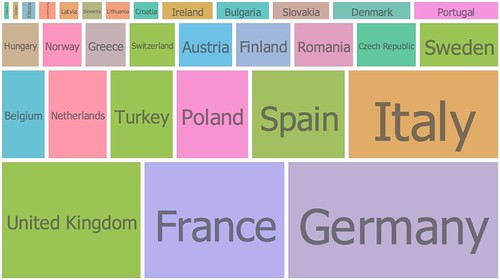
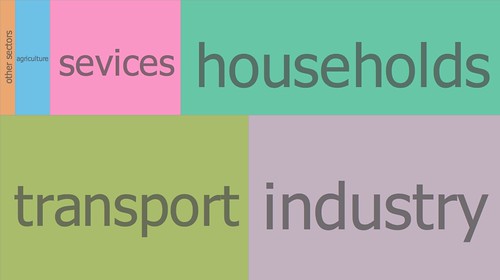
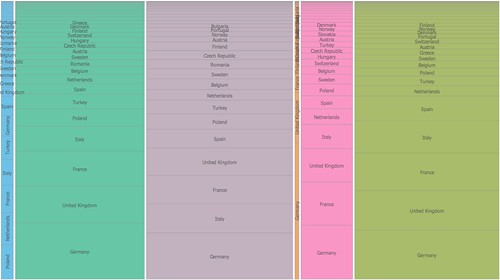
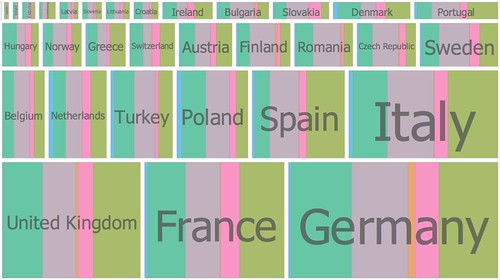
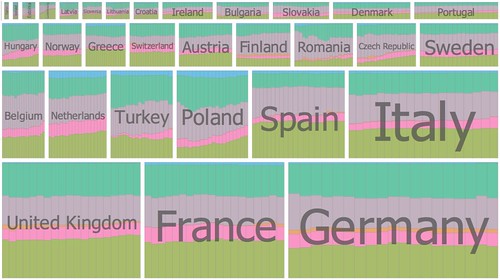
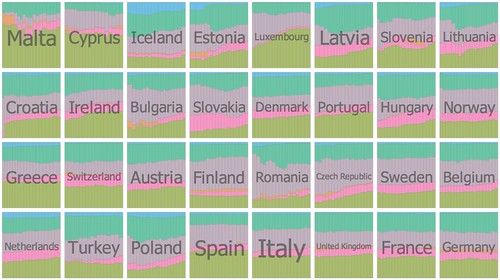
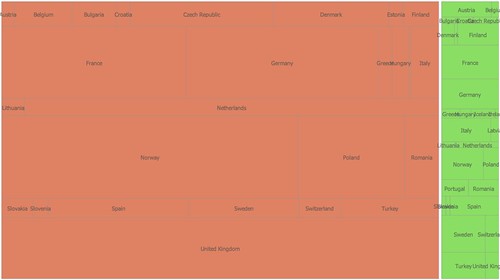

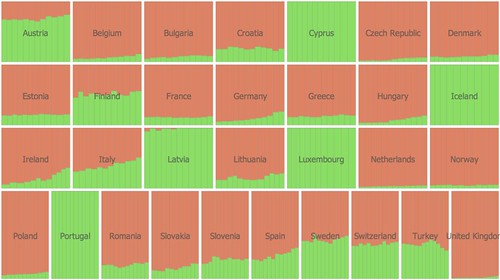









Hi,
this is great what you have done in one single day on Eurostat Energy Data – I would like to refer also to the mash ups the clean energy information gateway reegle.info has already done on Eurostat data some time ago – see: http://www.reegle.info/map/ and choose ‘energy statistics’ at the top of the map (and also try ‘animation’ for further comparism mechanisms)…cheers – martin
amazing job! is it possible to add numbers too?
(little numbers, like the ones in the “billion dollar gram” chart)
Great start of using this data set on energy within Europe. As you write a more elaborate analysis is planned. Would be great to focus on the “story behind the data” as well, e.g. what is going on in subsidy, climate control etcetera.
Keep on this great work and next time I might join!
See electricity production in European countries
http://www.windvogel.nl/2010/11/17/actuele-elektriciteit-opgewekking-in-europa/
Compare Energy Prices
Energy is something that we cannot do without. Energy allows us to cook, bath, watch television and it fills our homes with light. People often take energy for granted and many do not pay attention to how much they are paying for it each month until their bill arrives. While some people might be paying a much higher rate for this service they would never know it unless they compared the prices that they are paying to those of other companies.
Compare Energy Prices
Compare Energy Prices
Energy is something that we cannot do without. Energy allows us to cook, bath, watch television and it fills our homes with light.
Compare Energy Prices